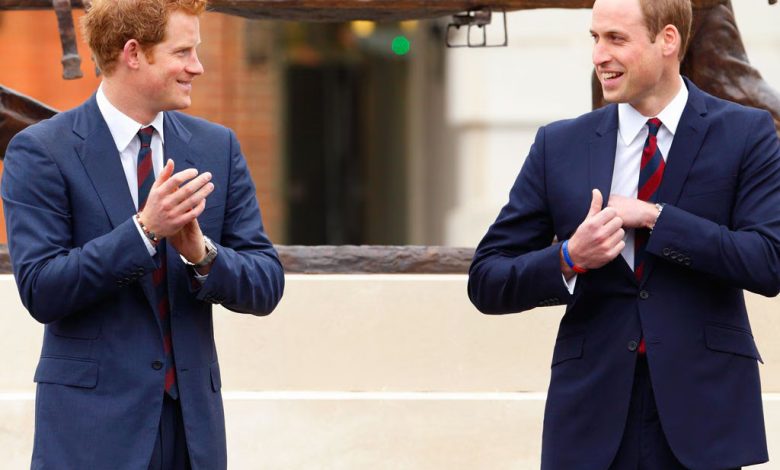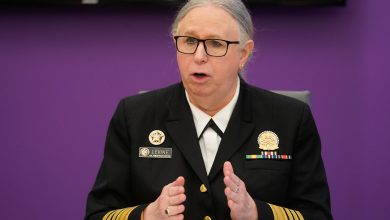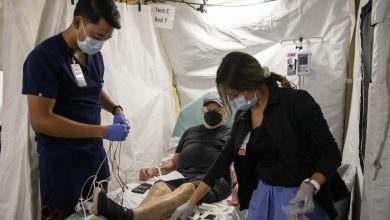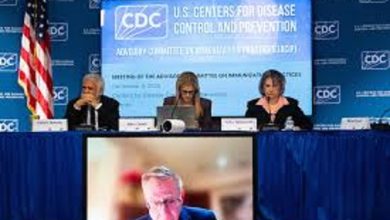Prince William Honors Suicide Prevention Day in Wales While Prince Harry Makes Headlines in London

In a poignant display of his commitment to mental health advocacy, Prince William, the Prince of Wales, marked World Suicide Prevention Day with a series of events in Wales. His presence underscored the royal family’s long-standing efforts to champion mental health awareness and break the stigma surrounding emotional well-being. Meanwhile, his younger brother, Prince Harry, drew attention in London with his own appearance, stirring discussions about the continued divergence of their public roles and personal journeys.
Together, the brothers’ activities highlight how two central figures of the British monarchy remain influential voices in different arenas, each approaching public service with a distinct style.
Prince William’s Visit to Wales: A Focus on Suicide Prevention
Honoring World Suicide Prevention Day
World Suicide Prevention Day, observed annually on September 10, serves as a reminder of the urgent global need to address suicide as a major public health challenge. According to the World Health Organization, nearly 800,000 people die by suicide every year, with countless more impacted by attempts, loss, or grief. The day is an opportunity for leaders, communities, and advocates to unite in encouraging conversations, raising awareness, and supporting those in crisis.
Prince William, now deeply embedded in his role as Prince of Wales, chose to mark the occasion with a visit to organizations and communities in Wales working on the frontlines of mental health. His engagement was more than ceremonial—it was personal, empathetic, and symbolic of his long-standing commitment to dismantling barriers to mental health support.
Meetings with Charities and Support Groups
The Prince visited a suicide prevention charity in Cardiff, where he spoke with staff, volunteers, and individuals who have been directly affected by suicide. He listened to powerful testimonies from parents who had lost children, young people navigating mental health struggles, and counselors working tirelessly to provide life-saving support.
William emphasized the importance of early intervention and community-based programs. “No one should ever feel alone in their darkest moment,” he reportedly told attendees. “We must make it easier for people to reach out and know that help is there.”
He highlighted how local initiatives can bridge gaps in national healthcare systems, providing culturally sensitive and immediate resources for those in need. By shining a royal spotlight on such organizations, William amplifies their voices and underscores the life-saving role they play in communities.
Royal Advocacy and Mental Health
Prince William’s advocacy for mental health is not new. Alongside his wife, Catherine, Princess of Wales, and his brother, Prince Harry, he launched the landmark Heads Together campaign in 2016. The initiative sought to normalize conversations about mental and physical well-being, using the royal platform to destigmatize seeking help.
Since then, William has continued to advance this work through the Royal Foundation’s mental health programs, his involvement in crisis support networks, and public speeches. His actions in Wales reflect both continuity and evolution in this mission—aligning with his current role as Prince of Wales, which demands a closer relationship with Welsh communities and institutions.
Prince Harry’s Headlines in London
A Different Kind of Spotlight
While Prince William spent Suicide Prevention Day in Wales, his brother, Prince Harry, was simultaneously making headlines in London. The Duke of Sussex, who has carved an independent path outside the traditional royal fold, drew attention with appearances that were covered widely in both British and international media.
Although Harry and Meghan Markle stepped back from senior royal duties in 2020, Harry continues to maintain ties with the UK, often returning for events that highlight his charitable or advocacy work. His London appearance—timed closely with William’s engagement—fueled inevitable comparisons between the brothers, whose relationship has been the subject of intense public scrutiny.
The Invictus Games and Advocacy Work
Prince Harry’s London presence was connected to his ongoing advocacy for veterans and the Invictus Games, the international sporting event he founded for wounded, injured, and sick servicemen and women. Since its launch in 2014, the Invictus Games have grown into a global platform for resilience, recovery, and rehabilitation.
In London, Harry met with supporters, partners, and athletes linked to the Games. He spoke about the transformative power of sport, community, and shared experience in helping veterans heal from both visible and invisible wounds.
“I’ve seen firsthand how strength and recovery come not only from treatment but also from purpose and connection,” Harry said in one address. “The Invictus Games show us that even in the face of adversity, the human spirit can achieve remarkable things.”
While his focus was not directly linked to Suicide Prevention Day, Harry’s advocacy intersects with similar themes: trauma, resilience, and mental health. Veterans, in particular, face disproportionately high risks of suicide and mental health challenges, making his work deeply relevant to the day’s broader message.
Media Coverage and Public Reactions
As with much involving Harry, his London appearance sparked mixed reactions. Supporters praised his ongoing commitment to veterans and admired his ability to sustain initiatives independent of the royal institution. Critics, however, noted the timing of his visibility—so close to William’s engagement in Wales—arguing it reignited narratives of rivalry.
Media outlets inevitably framed the brothers’ simultaneous appearances in a comparative lens. Headlines juxtaposed William’s royal duties with Harry’s independent activism, reviving discussions about the paths they have taken since their much-publicized split.
Brothers on Different Paths
Shared Roots, Diverging Roles
Prince William and Prince Harry grew up in the same royal household, navigating the loss of their mother, Princess Diana, and enduring the pressures of global scrutiny. Both have spoken candidly about how their mother’s death shaped their perspectives on grief, trauma, and mental health.
In many ways, their shared roots explain their mutual dedication to causes like mental health awareness and veterans’ welfare. Diana herself was known for championing marginalized voices and breaking taboos, from AIDS awareness to homelessness—an ethos that her sons clearly inherited.
Yet, while their causes often intersect, the contexts in which they operate diverge significantly.
- Prince William acts within the framework of monarchy. His advocacy is tied to the responsibilities of the Crown, requiring him to balance compassion with constitutional neutrality. His role demands formality, diplomacy, and continuity.
- Prince Harry, by contrast, operates outside of this system. His activism is more personal, direct, and sometimes confrontational. Without the constraints of monarchy, he is freer to speak candidly, pursue independent projects, and build partnerships in both the UK and the US.
Public Perceptions
Public perceptions of the brothers remain divided, influenced by media narratives, personal loyalties, and political leanings. William is often viewed as steady, responsible, and emblematic of tradition—qualities expected of a future king. Harry, meanwhile, is seen as the rebellious outsider, admired by some for his independence and criticized by others for perceived disloyalty.
Their contrasting images were on full display during Suicide Prevention Day: William as the royal figurehead reinforcing national solidarity, Harry as the independent activist highlighting resilience in a global context.
Suicide Prevention and the Role of Public Figures
Why Celebrity Advocacy Matters
When public figures like Prince William and Prince Harry speak about mental health and suicide prevention, they wield influence beyond typical awareness campaigns. Their platforms reach millions, cutting through stigma and sparking conversations in households that might otherwise remain silent.
William’s presence in Wales brought national attention to local organizations that might not otherwise receive mainstream coverage. Harry’s advocacy for veterans reinforced the importance of acknowledging invisible wounds of trauma. Both approaches contribute to a broader cultural shift toward openness and compassion.
The Global Urgency
Suicide remains one of the leading causes of death worldwide, particularly among young people. Factors such as isolation, economic hardship, trauma, and mental illness compound the risks. Initiatives that normalize conversations, provide resources, and expand support networks are essential.
Public figures cannot solve these systemic challenges alone. However, by lending visibility, they influence policy priorities, inspire donations, and encourage individuals to seek help without shame.
The Symbolism of Wales and London
The fact that William was in Wales and Harry in London on the same day holds symbolic weight. Wales, often viewed as central to William’s new responsibilities as Prince of Wales, represents his integration into national duty and tradition. His choice to spotlight suicide prevention there highlights his intention to root his role in service and community.
London, by contrast, is both the heart of the monarchy and the global stage for Harry’s independent initiatives. His appearance in the city where his royal story began—but in a context beyond monarchy—illustrates his unique position as both insider and outsider.
Together, their activities showcase two evolving models of public engagement: one bound to crown and country, the other to personal mission and global citizenship.
Conclusion:
Prince William’s honoring of Suicide Prevention Day in Wales and Prince Harry’s headlines in London may invite comparisons, but they also underscore a shared legacy. Both brothers, shaped by personal tragedy and public expectation, have chosen paths that elevate conversations about mental health, resilience, and human dignity.
Rather than viewing their activities as competition, one might see them as complementary. William, future king, anchors his work in national identity and institutional continuity. Harry, free from monarchy, experiments with new modes of activism, often resonating with global audiences.
On World Suicide Prevention Day, their parallel presences remind us that the fight against stigma, despair, and silence requires voices from every corner—royal and non-royal alike. The tragedy of suicide knows no borders, no institutions, no divisions. And in their different ways, both princes continue to honor the legacy of their mother, Princess Diana, by putting humanity first.




